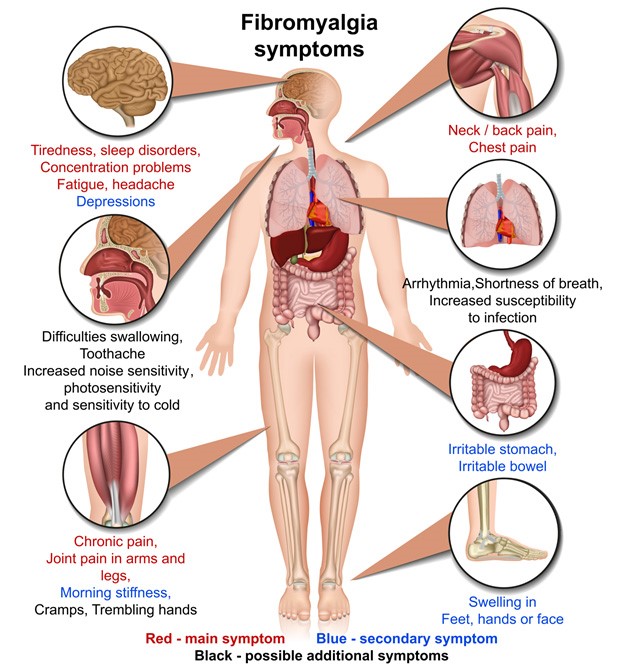Widespread pain, fatigue, difficulty concentrating and with memory. These are the symptoms of a common condition called Fibromyalgia. While the condition can be frustrating and debilitating, we have reviewed the best available research to show you how you can gain control over Fibromyalgia.
The Best Natural Management
Without including medication, the recent evidence suggests that exercise is the best way to manage Fibromyalgia symptoms. The best types of exercises are to combine endurance exercises with stretching. Here’s what is known about exercise for fibromyalgia.
Endurance exercises
These are generally low intensity exercises such as walking, jogging, bike riding and swimming. Whatever you prefer!
These have been shown to increase fitness and quality of life and reduce pain and any depressive symptoms.
To achieve the most benefit, it is recommended to perform the exercise for 45 minutes, 3 times per week.
Bonus tip: as a warmup, try to swing your arms and legs around to help free up the joints before beginning.
Stretching
Stretching has been shown to reduce pain, and fatigue, and improve the function of the muscle, sleep, and quality of life.
Ideally, stretches should be sustained for 15 or more seconds but this may cause too much pain initially. A 6 second stretch is long enough to see some benefits, and then the body will adjust, meaning the stretch can last longer. Stretching should be done 3 times per week, ideally after exercising.
Bonus tip: Massage the muscle before stretching it to allow it to relax as much as possible so you can get the most benefit out of the stretch.
For maximum impact, stretching exercises should target the muscles causing the most pain or stiffness and this will be different on everyone. This is where your physiotherapist can help identify the right muscles and how to stretch them effectively. Group yoga and Pilates classes can also be helpful as they will also stretch out a range of muscles.
Strength Training
Strengthening exercises include any lifting or pushing with resistance bands or weights. Strength training should be approached more cautiously for people with Fibromyalgia. There is some evidence that suggests these exercises may improve function and strength, however they are likely to cause pain while performing them which makes them harder to complete and receive any benefit from them.
Other Pain Management Strategies
Massage is one of the simplest and most effective pain relief techniques. It may be performed by a massage therapist, physiotherapist or by yourself at home. Massage has been shown to reduce pain, fatigue, stiffness, anxiety, and depression in people with fibromyalgia. For best results, massage over the more painful or stiff muscles for 1-3 minutes.
Physiotherapists often have further training in dry needling (using acupuncture needles inserted into trigger points to relieve muscle tension) to further reduce specific points of pain or stiffness.
Fact Sheet written by Aaron Rutherford, 4th Year Physiotherapy Student on Clinical Placement at PhysiYoga.


